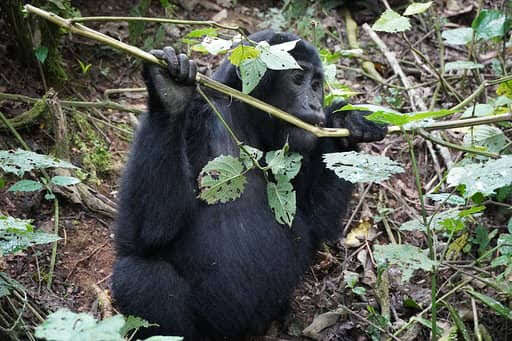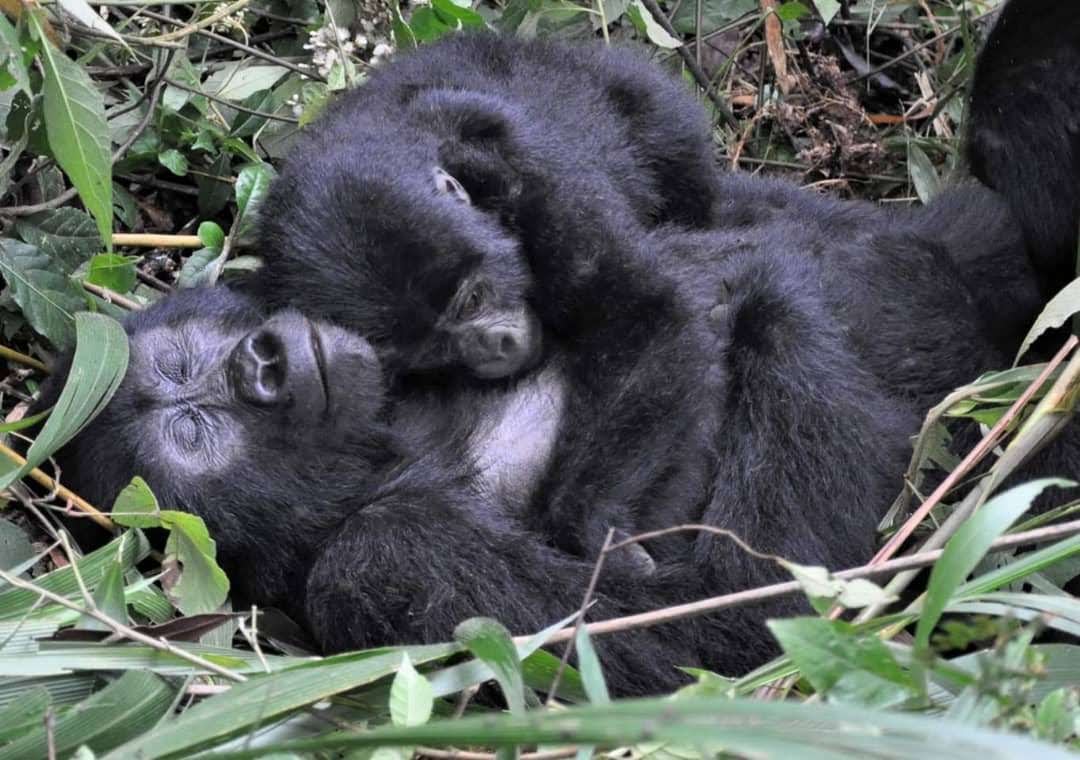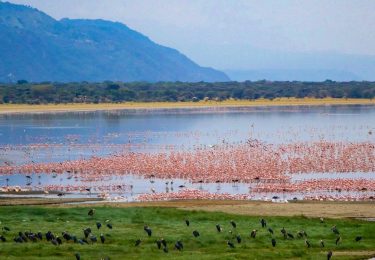- Home
- About Us
- Uganda safaris
- Long Safaris
- Short Safaris
- Day Short Safaris
- 1 Day Entebbe Botanical gardens weekend birding excursion
- I Day Entebbe City Tour
- 1 Day Jinja, Mabira, Ssezibwa Tour
- 1 Day Jinja Source of the Nile tour
- Lake Victoria Sunset Cruises
- 1 Day Kampala City Tour
- 1 Day Mabamba Shoebill Stork And Birding Tour
- 1 Day Makanaga Shoebill And Birding Trip
- 1 Day Ngamba Island Boat And Chimpanzee Excursion
- Other Tours
- Gorilla Safaris
- Uganda Gorilla safaris
- 4 Days Mgahinga Bwindi gorilla and golden monkey trekking safari
- 3 Days Mgahinga Gorilla trekking safari
- 5 Days Mgahinga Gorillas, Golden Monkey And Lake Bunyonyi Tour
- 5 Days Gorillas And Wildlife, L.Mburo, Bwindi and L. Bunyonyi
- 8 Days Wildlife, Gorillas, Golden Monkeys Trip
- 8 Days Gorillas Chimpanzee and wildlife Trekking Tour
- 9 Days Kidepo Valley National park and Bwindi Gorilla Safari. Wildlife and gorillas
- 11 Days Gorilla And Chimpanzee Tracking and wildlife Safari
- Rwanda Gorilla Safaris
- Uganda Gorilla safaris
- National Parks
- Kidepo Safaris
- Queen Elizabath Safaris
- Lake Mburo Safaris
- Mgahinga
- Mgahinga Gorilla National Park
- 3 Days Mgahinga Gorilla trekking safari
- 4 Days Mgahinga Bwindi gorilla and golden monkey trekking safari
- 5 Days Rwand-Uganda Gorilla, Golden Monkey trekking trip
- 5 Days Mgahinga Gorillas, Golden Monkey And Lake Bunyonyi Tour
- 8 Days Wildlife, Gorillas, Golden Monkeys Trip
- Our Blog
- Other Safaris
- Home
- About Us
- Uganda safaris
- Long Safaris
- Short Safaris
- Day Short Safaris
- 1 Day Entebbe Botanical gardens weekend birding excursion
- I Day Entebbe City Tour
- 1 Day Jinja, Mabira, Ssezibwa Tour
- 1 Day Jinja Source of the Nile tour
- Lake Victoria Sunset Cruises
- 1 Day Kampala City Tour
- 1 Day Mabamba Shoebill Stork And Birding Tour
- 1 Day Makanaga Shoebill And Birding Trip
- 1 Day Ngamba Island Boat And Chimpanzee Excursion
- Other Tours
- Gorilla Safaris
- Uganda Gorilla safaris
- 4 Days Mgahinga Bwindi gorilla and golden monkey trekking safari
- 3 Days Mgahinga Gorilla trekking safari
- 5 Days Mgahinga Gorillas, Golden Monkey And Lake Bunyonyi Tour
- 5 Days Gorillas And Wildlife, L.Mburo, Bwindi and L. Bunyonyi
- 8 Days Wildlife, Gorillas, Golden Monkeys Trip
- 8 Days Gorillas Chimpanzee and wildlife Trekking Tour
- 9 Days Kidepo Valley National park and Bwindi Gorilla Safari. Wildlife and gorillas
- 11 Days Gorilla And Chimpanzee Tracking and wildlife Safari
- Rwanda Gorilla Safaris
- Uganda Gorilla safaris
- National Parks
- Kidepo Safaris
- Queen Elizabath Safaris
- Lake Mburo Safaris
- Mgahinga
- Mgahinga Gorilla National Park
- 3 Days Mgahinga Gorilla trekking safari
- 4 Days Mgahinga Bwindi gorilla and golden monkey trekking safari
- 5 Days Rwand-Uganda Gorilla, Golden Monkey trekking trip
- 5 Days Mgahinga Gorillas, Golden Monkey And Lake Bunyonyi Tour
- 8 Days Wildlife, Gorillas, Golden Monkeys Trip
- Our Blog
- Other Safaris
MGAHINGA GORILLA NATIONAL PARK. (Where silver meets gold)
BWINDI IMPENETRABLE NATIONAL PARK
May 20, 2019
WHEN IS THE BEST SEASON TO TRACK GORILLAS?
May 23, 2019Mgahinga gorilla national park is Uganda’s smallest national park covering an area of only 34 square km. It was declared a game sanctuary in 1930 and upgraded to a national park status in 1991. It covers the Ugandan slopes of the three dormant virunga volcanoes; Muhabura, Gahinga and Sabinyo. It adjoins Volcanoes national park in Rwanda and Virunga national park in Congo DRC. Collectively these three parks form the trans boundary virunga conservation area (VCA) that protects half of the world’s 1000 mountain gorillas (the rest live in nearby bwindi impenetrable national park)
Gorilla conservation in the virunga dates back to 1925 when the Belgians gazetted the portion of the present day Congo and Rwanda as a national park, consequently the British declared the Ugandan section a game sanctuary in 1930
Mgahinga gorilla national park is home to 76 mammal species, including the endangered mountain gorillas and golden monkeys. Other large mammals include elephants, buffalo, leopard and giant forest hog. The park also has a bird checklist of 115 species that include many local forest birds and Albertine endemics like the striking rwenzori turaco.
Activities in the park
Gorilla tracking
Mgahinga has only one family of habituated gorillas that in the past used to crisscross borders into Congo or Rwanda but has now permanently settled in Uganda (Mgahinga gorilla NP). In the past it was booked ahead of time because of its unreliability but now it okey for one a gorilla permit in mgahinga gorilla national park because the family is Permanently their
Golden monkey tracking
Golden monkeys are also an endangered species of monkeys in the virunga massif. The volcanoes are the the last stronghold of the golden monkeys which can be tracked through its bamboo habitat on the slopes of mount Gahinga.
Volcano climbing
Mgahinga gorilla national park rises upwards to three of the virunga’s six volcanic summits, all of which can be climbed in a day. The summits provide views into Rwanda and Congo, and towards the rift valley and Bwindi impenetrable national park forest. The peaks include
Muhabura 4127m
Gahinga 3474m
Sabinyo 3669m
Birding
Home to Albertine endemics and other forest birds like the rwenzori turaco
Batwa trail
For generations mgahinga dense forest were home to the indigenous batwa (pygmy) hunter gatherers and woriors who depended on the forest for shelter, food and medicine. When the forest was gazetted into a national park in 1991, the batwa were moved out and allocated land outside the forest. Today the batwa guides lead visitors through the lower slopes of the forest introducing them to their old home and demonstrating the skills they used to survive in the forest





